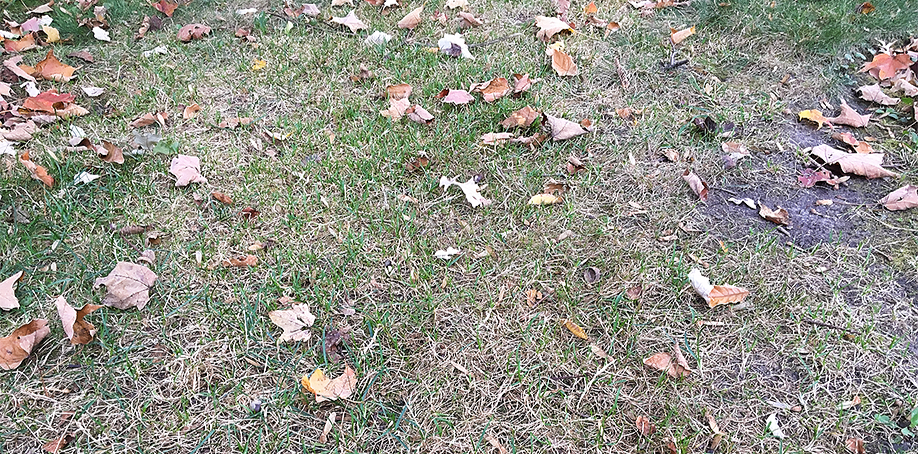
Drought - Do or Dry
There’s no way to sugarcoat this. Since August 1st we’re 5.5” deficient in rainfall. That’s Drought, capital D, and means severe, even deadly, consequences for landscape plants that haven’t received supplemental water.

One of the toughest questions we get asked as horticulturists is, “How much do I water?” You were hoping for a one sentence answer to that question, weren’t you? Okay, years ago a colleague shared a great guideline she had read on that subject. This generalization holds for trees, shrubs, lawns, perennials, veggies; etc. For each week of 75° temps one inch of rainfall, or its equivalent, will maintain plants in a vigorous growing condition. For each additional 10° F. per week, add ½” of water. So, if it’s consistently 95° for a week plants should be receiving 2” of moisture in that time period. I understand soil type and a lot of other conditions come into play, but it’s a fair generalization. Does that help quantify plant needs?
Some watering conditions:
- It's best to water established plants deeply and infrequently. Plants are lazy, too. If water is always sprinkled at the surface, root systems will be shallow. If the soil surface dries out periodically, roots will grow deeper looking for available water. Deep-rooted plants tolerate stress better than their shallow-rooted counterparts. Yep, do think seriously about changing that irrigation system from a 5-minute spritz every other night all summer.
- Get a rain gauge. It doesn't matter how much it rained at O'Hare. How much did it rain in your garden? That'll allow you to make use of the 1" generalization mentioned earlier.

- When watering trees understand the root system extends beyond the dripline (the imaginary line from the outermost branches to the ground). Don’t concentrate your efforts at the trunk for this reason. Distribute water more widely under the dripline.
- Don't count on a straw-colored lawn just being dormant. Dormancy is a great self-preservation technique. You need to know that even a dormant lawn requires at least 1/2" of water per month to keep it alive. It won't be green, will still be dormant, but alive to green up and grow another day when temps and moisture are favorable again.

- If you're hand-watering a dry area (gotta' have a long-handled wand) water the soil slowly and gently, maybe even letting it puddle on the surface. Then move on to another area. Come back later to re-water and that moistened soil surface will more readily accept additional moisture. This is opposed to flooding a hard, dry area once and moving on. Remember, water deeply.

- Reduce water loss. Keep soil temps cooler. Stop weeds from growing and competing with your beloved plants. Mulch is a must, not an option.

- In summer hear and drought, don't let wilting be your cue to water. Every time a plant wilts, growth potential is lost and stress is induced.
Many times a mature plant will have enough stored foods that it will appear to “rebound” after a rain. That’s Nature’s way- survival. So, it may be 1-3 years after a serious drought for stress symptoms to show: decreases in stem growth, flower and fruit production; bark cracking, stem canker, twig and branch dieback, as well as general thinning of foliage; premature defoliation, increased susceptibility to insect and disease outbreaks.
Heading out to water? Don’t forget the sunscreen and visor.
Share
